| Umělec 2007/1 >> About White and Black: About White | Просмотр всех номеров | ||||||||||||
|
|||||||||||||
About White and Black: About WhiteUmělec 2007/101.01.2007 Alena Boika | review | en cs de |
|||||||||||||
|
The man I love once said, "I‘m walking now through a foggy park, it‘s dark and warm." I answered, "A year ago, there was a woman with a black dog there. Is she still there?" He answered, "No, but, there are a lot of camels now." I said, "They must be white." He answered, "Yes, in the darkness they seem white," and asked me, "Do you know how to count these midnight camels?" I answered, "As a rule, I meet white horses – they are white inside and on the outside." He asked, "Have you looked into a white horse?" I answered, "No, the one was black and blackness inside was absolute (It was all black from his mane to his tail … )." He asked, "How can I believe you if you speak about inside whiteness?" I said, "It is just like the moon – we only see one side of it, but, never doubt that it is round." He asked, "Are the camels as round as the moon?" I said, "Absolutely everything including round camels has two sides – a white one and a black one." He said perplexedly, "But you said that they are white and white, but not white and black…" I had to say, "You cannot see two in one and this means that you are a happy man, which is not quite right and some particular instances of your melancholy are the best demonstration of it."
To those I love I'm listening to jazz. The beautiful music can barely be heard, but is enough to fill the air with a clear harmony and a feeling of informal art. Even if I provided the names of the musicians and compositions and transliterated the notes, the idea of this blue kitchen where I‘m sitting wouldn’t become any clearer. Still, I shall attempt to describe my feeling about the color white illustrating with a discussion of two exhibitions—both very different, and both very white. The first one was in Switzerland—a country that for me represents the full solar spectrum—and in Zurich, the town that continues to seem an illusion. The other exhibition was presented in a city chronically short of those white sunbeams most of the time, where solaria are so popular: Moscow. The White in Swiss The Swiss exhibition took place at the Zurich Kunsthalle from August 26 to October 29, 2006. Along with a Moscow artist that I shall discuss shortly, Chinese-born artist Terence Koh, a resident of New York but currently in Berlin, presented work using girandoles, sugar candies, hair and fur from all imaginable living creatures, ideally safe and skillfully broken glass, gold, extremely expensive chinaware, goods of consumer kitsch and cliché, a hawser found after midnight, urine, blood, toys, and lots of other things. Exhibition visitors were confronted in the lobby by a two-sided self-portrait in the form of an upside-down head dangling from the hawser above. The face was impassive but, with his mouth agape with either a smile or a scream, and a painful grimace, he made people shiver. In the first hall, you could find two huge white sculptures or statues, or rather two objects, but, exclusively masculine objects. It wasn’t because they had penises – they did not – but their figures and meters of height and configuration presented an inescapably masculine form. Some saw in them a direct reference to the Swiss Alps – big and white – one of beloved images of mass culture and advertisers. In addition, those "masculine mountains" were covered here and there with dark Swiss chocolate—Swiss-ness longing for the sublime. The fragility of foam plastic, covered with candle wax and chocolate, made for an overwhelming impression of might and monumentality. In the next hall, you could lose your sight because of the whiteness: empty space filled with the deadly pale light of daylight bulbs, which lit the emptiness and that finest white sand or powder (later, reading press release to the show, I discovered that it was tapioca flour), which was covering everything around. The hall also served as a habitat for two birds—also white—which were absolutely impossible to notice there. Occasional traces of their vital functions proved that they indeed lived there—a peculiar interpretation of the myth about purity and the fall. A doorway located as if out of that white world was the main visible object of that hall. Making careful steps on those invisible shining particles, you enter the next room (… The door drawing near, the wind touched upon his clothing and brow…). There, the maximum emptiness all of a sudden changed into maximum fullness: 1184 glass show-cases with white objects inside. The room was a fragile storehouse of dead white things: glass cubes filled with various stuffed animals, statuettes, skulls and skeletons, tourist trifles, expensive jewelry, flotsam and jetsam of animals, birds, dishes, and people - everything was equaled, balanced, refined or, perhaps, depreciated by the white layer of a substance covering everything around and only the glass of the show-cases remained untouched, even though they were cracked here and there implying they were unable to carry what was clearly encased within, with white as some kind of judgment (No run of the time, no meanings… ). Death is as refined and clean as time. Sophisticated glass pyramids aiming toward order, got up upon one another, grew up and widened, being unable to cancel out, but yet proved that all are equal, before the cleanness of dying. The color of the next room was wet asphalt, as fashionable girls love to say. In the complete emptiness two balls were hanging from above touching each other and lightening that gloomy room with the same deadly pale daylight. Some spectators might see in them reference to such famous works as Felix Gonzalez-Torres’s "double” watch or Jorge Pardo's lamp installation; and other spectators – a direct indication at a masculine sexual organ. Four laconic rooms: about love, catharsis, and death. The White in Moscow The Moscow exhibition was not so solemn and refined (H5N1. Sweet Sleep, Aleksey Kostroma. M.Guelman Gallery, November 23 – December 16, 2006). At the entrance, a warning greeted visitors, "Watch it, lots of feathers!" One of the gallery's halls was completely covered and paved with excellent white feathers and fluff – to all appearance from ducks and geese, which was ambiguously confirmed by portraits from the MacDuck series on the walls. Laconic reserved drawings in the best Disney tradition, yet almost colorless. Crude boots and stiletto heels of rapturous visitors rolled in fluffy extravagance, and nobody considered the bloody murders committed for the sake of whiteness. Or rather, they would fail to think of it if some of the works did not point to the bloody indications of the bird flu that had killed the victims. To the same images the displays exhibited in the next hall could be added. The hall was not so luxuriously white, but stylistically consistent. There, for the first time, a small retrospective demonstration of significant works by Aleksey Kostroma – objects made of feathers and egg-shell was available. A bust of Stalin was covered with fluff and a Coke bottle, which was turned into a Molotov cocktail bottle, was fuzzy. Kostroma’s trade mark—white feathers, bird fluff—is the substance of almost all his objects and installations and a tenet of his art philosophy, an "organic way." A project of 1994 is worthy of note as feathering there alludes to famous works of art –Mona Lisa, Black Square, Coca-Cola can, The Eye by Magritte, Joseph Kosuth’s chair, Stalin's plaster head, and Jeff Koons' Rabbit. The idea of the Bird Flu project was hatched two years ago, when Kostroma saw in Der Spiegel artwork depicting birds' heads cut off, which caused a scandal in Germany. The birds infected with the bird flu virus were either killed in gas chambers or, because of some vague reasons, had their heads severed. The fate of the poor birds and the image of severed heads prompted a history of Donald Duck, the Disney character and a travesty who is at a loss because of the unexpected loss of his head. The transparency and publicity of the project is in the obvious clash of images that exist in present-day reality and in parallel worlds that from time to time encounter each other on pages of glamorous magazines. Behind the H5N1 bird flu story, the artist perceived more than just another scandal or painful symptom of contemporary history skillfully boosted by the media and torturing average people with scary images. In the 1990s, fluff and feathers were interpreted in post-Soviet Russia as a metaphor of play, freedom and easiness. A carnival element followed all Kostroma‘s actions, built on direct participation of viewers. Here, as it seems, there is something different. Of course, the soft, white, light, and fluffy stuff is still present, but this harmless material in this present project is fraught with fear, challenge and threat. It bears blood behind it – the artist employed a strict, almost documentary technique representing a slaughter-house for birds. Now the background white – thick glamorous flossy – is transformed into the cynical package of good-looking effective wrapping, and becomes its own antithesis. The joke neither entertains anymore nor looks amusing or harmless. It‘s been long since Kostroma learned to see extremely human things behind natural forms and biorhythms. They were not slow in coming, however, not in the form of a human-like duck – an amusing Duck – but in the eternal and fearsome Biblical images of Holophernes’ and Saint John’s heads, and in contemporary Russian history with the severed heads of Russian soldiers in Chechnya. This exhibition is especially interesting today in light of the recent notorious event in Moscow: assault at M.Guelman Gallery on October 21, 2006 and destruction of the Alexander Jikia exhibition. To be white and fluffy is the best scoffing reply from the beaten gallery-owner and destroyed gallery. The most delicate shoe may hide a terrorist’s foot too. An exhibition entitled Art or Death, which had been planned for February 15 in the Central House of Artists as a reply to the disgusting trick on the gallery, proves the accuracy of the expressed supposition: black–white; always–two in one.
01.01.2007
Рекомендуемые статьи
|
|||||||||||||
|
04.02.2020 10:17
Letošní 50. ročník Art Basel přilákal celkem 93 000 návštěvníků a sběratelů z 80 zemí světa. 290 prémiových galerií představilo umělecká díla od počátku 20. století až po současnost. Hlavní sektor přehlídky, tradičně v prvním patře výstavního prostoru, představil 232 předních galerií z celého světa nabízející umění nejvyšší kvality. Veletrh ukázal vzestupný trend prodeje prostřednictvím galerií jak soukromým sbírkám, tak i institucím. Kromě hlavního veletrhu stály za návštěvu i ty přidružené: Volta, Liste a Photo Basel, k tomu doprovodné programy a výstavy v místních institucích, které kvalitou daleko přesahují hranice města tj. Kunsthalle Basel, Kunstmuseum, Tinguely muzeum nebo Fondation Beyeler.
|







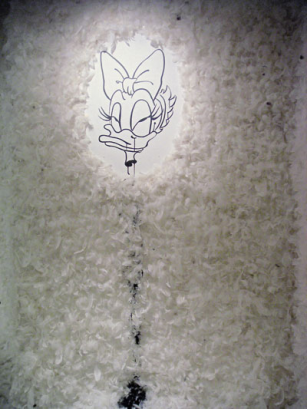




















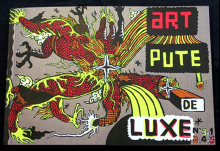
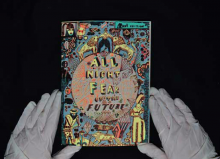
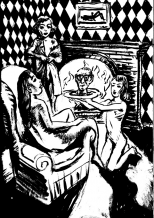
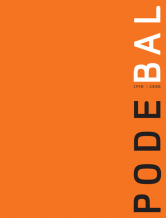


 New book by I.M.Jirous in English at our online bookshop.
New book by I.M.Jirous in English at our online bookshop.
Комментарии
Статья не была прокомментированаДобавить новый комментарий